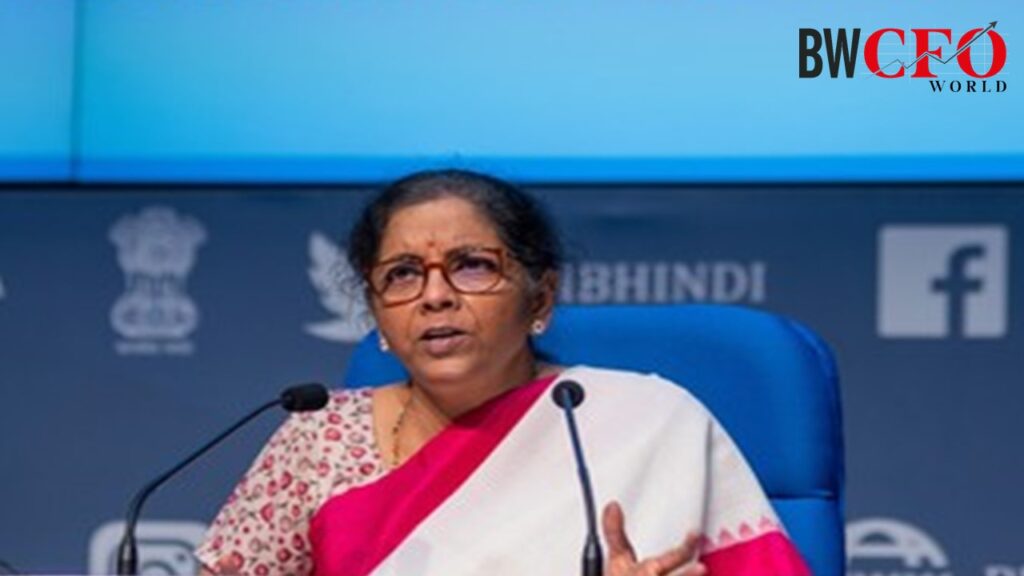FM says that the number of banks matters but what matters more is that banks must be bigger in scale, the future of the banks and the economies would revolve around digitisation.
Finance Minister Nirmala Sitharaman on Sunday said India would need four or five more big banks like State Bank of India to scale up banking and meet the changing requirements of the economy and industry. “The way in which the economy is shifting to a different plane altogether, the way in which industry is adapting, so many new challenges keep arising. To address these challenges, we need not just more, but bigger banks,” she said while addressing the Annual General Meeting of the Indian Banks’ Association (IBA).
The FM asked the industry to imagine how Indian banking has to be in the immediate and long-term future. “If we look at post-Covid scenario, India’s banking contour will have to be very unique to India, where there has been an extremely successful adoption of digitisation,” she said. While banks in many countries could not reach out to their clients during the pandemic, the level of digitisation of Indian banks helped us to transfer money to small, medium and big account holders through DBT and digital mechanisms, she added.
Sitharaman underlined the importance of seamless and interconnected digital systems in creating a sustainable future for Indian banking industry. “Long-term future of Indian banking is going to be largely driven by digitised processes.”
The benefits of digitisation notwithstanding, the Finance Minister observed that there are wide disparities as well in access to financial services. “There are parts of our country where brick-and-mortar banks are necessary,” she said. The FM asked the IBA to improve access of banking in every district through a rationalised approach and optimal utilisation of digital technologies. To achieve this, she advised the IBA to carry out digitised location-wise mapping of all bank branches for every district of the nation.
“Almost two-thirds of nearly 7.5 lakh panchayats have optical fibre connection, IBA should consider this and conduct an exercise and decide where banks should have a physical presence and where we are able to serve customers even without physical branch,” she said. IBA should take the initiative and complement the government’s efforts for financial inclusion and enhancing access to financial services, especially in unserved and under-served areas, Sitharaman added. The FM reminded bankers of the need to adapt in line with fast changes in technology. “What we think is latest today will be outdated in a year or so, we have to thus acquire resources to constantly update ourselves.”
“Such nimbleness and agility are especially important in India being able to achieve the ambitious export targets we have set for ourselves,” she said. The government has given an export target of $2 trillion by 2030, $1 trillion in merchandise exports and $1 trillion in service exports. “In an age of rapid change post the pandemic, there are going to be a lot of challenges in how we look at customers. These challenges cannot be addressed unless banks are going to be nimble, with sound understanding of various businesses and sectors,” the Finance Minister said.
Hence, the banking industry needs specialists to understand the unique business requirements of diverse sectors and the many businesses who are rapidly relocating to India, she said.
Sitharaman also spoke of the high potential for banking outreach in the eastern region. “The eastern region of this country has more than adequate CASA (current account-savings account), but there are no takers for credit. You need to address this issue and see how you can lend in those regions, in states such as Bihar,” she added reportedly.
The Finance Minister said the UPI needs to be strengthened. “In the payment world today, Indian UPI has actually made a very big impression. A RuPay card which was not as glamorous as a foreign card is now accepted in so many different parts of the world, symbolic of India’s futuristic digital payment intentions.
“Fintech understands that UPI is its backbone, you have to give it its flesh and blood, you have to strengthen UPI,” she told bankers. She stressed that the National Asset Reconstruction Company Ltd is not a bad bank. “It is a formulation intended to clean up banks’ assets and dispose of NPAs in a speedy manner. Banks are now able to raise money from the market, hence the burden on govt. to recapitalize banks will be less, this is how we want banks to function – a lot more professional, with a changed mindset.” Sitharaman said this is absolutely the right time to become professional, adding, “Bank valuations should be razor-sharp, enabling you to raise the right kinds of amount at the right cost.”
Theoretically, the key reasons for mergers are economies of scale and scope, revenue enhancement, value maximisation, efficiency gains, cost savings, diversification of customers and assets, and also that large banks help in international recognition. But mergers, in general, are a challenge and have to be carefully designed. They can be successful in similar institutions with a similar culture, but cannot be extensively adopted because it could lead to job cuts, branch closures, and, in some cases, a lowering of the quality and quantity of services. Mere consolidation of weak banks does not produce a healthier institution. It, in fact, can cause great harm to the economy. It is necessary that while SBI, India’s largest lender, competes with the very best banks of the world, in terms of size, business, and branch network, it faces some competition from within the country. Further, consolidation is not just about size but also about efficiency and synergy as economies of scale make the bank more productive, profitable, and competitive. There is evidence to show that large PSBs are more efficient and perform better than small PSBs.
